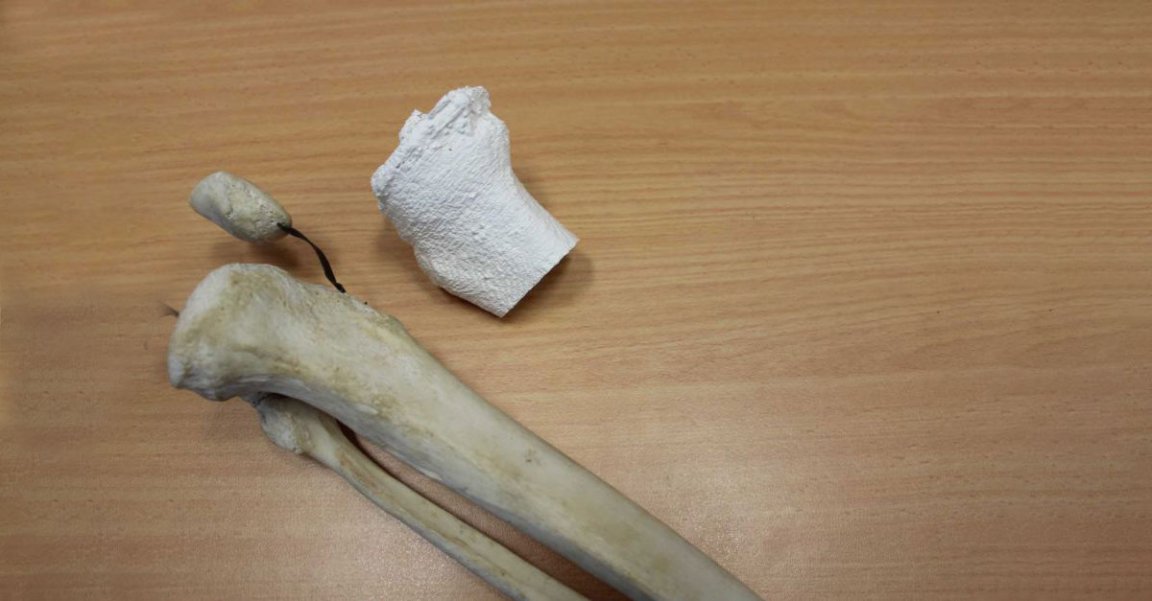
New Alternatives
Surgeons in Australia have successfully performed a world-first transplant surgery, installing a 3D printed tibia into the leg of Reuben Lichter, who faced losing his leg above the knee to amputation. The 3D printed tibia was wrapped in blood vessels and leg tissue from both of his legs. Just over two weeks ago, in the last in a series of five surgeries, the procedure was declared a success. For the next nine months at least, the doctors hope to observe new, healthy bone growth in the patient’s right shin supported by the transplanted scaffolding.
Lichter’s own tibia began causing him intense pain at the beginning of this year. He was diagnosed with osteomyelitis (a severe disease usually caused by bacteria) which infected his entire bone, causing it to gradually disintegrate. When offered the chance to undergo this experimental procedure, he agreed to an attempt to save his leg rather than opt for amputation. Lichter is now doing well, and although it will take at least 18 months, doctors believe he will be walking again once he fully recovers.
First, doctors needed to drain the pus from the patient’s infected leg. Prototypes of the 3D tibia scaffold were then tested. The experimental procedure concluded with the most recent operation, when the final version of the scaffold was transplanted. “We needed to work out where we could get tissue that had the potential to grow bone,” lead surgeon Dr. Michael Wagels told The Age.
In late 2017, live sheep will be the subjects for experimental biomechanical research which will assess the strength and pace of bone growth around the new shinbone. “We are not willing to take any chances with Reuben’s leg until that biomechanical testing has been done,” Dr Wagels added.

The 3D tibia “scaffold” was first modeled at Queensland University of Technology, and then printed in Singapore. It is designed to promote bone growth around it, and slowly dissolve over time. Lichter’s two shin bones together provided the doctors with about half of the tissue they needed for the procedure (the medical team harvested the remainder of the needed tissue from the patient’s left knee). The tissue transplanted with the 3D-printed scaffold is now beginning to grow in and around the frame as intended.
3D Printing in Healthcare
This surgery paves the way for the successful transplantation of major bones — whether for patients with infections, or for victims of traumatic accidents. Osteomyelitis affects about 2 in 10,000 in the U.S., and there are almost 2 million people living with limb loss in the states. 45 percent of those patients have limb loss caused by trauma. Worldwide, those numbers are higher — especially in areas plagued by civil war, armed conflict, and problems like landmines remaining from previous conflicts. This kind of bone transplant has the potential to help many of them avoid amputation and the lifelong pain and disability it can cause.
Even so, this is only one of many medical applications for 3D printing. Prosthetic limbs can be 3D printed, and even children have been able to design and 3D print prostheses. 3D bioprinting technology is being hailed as a true game changer in a world where people wait for donor organs for years — sometimes dying before a match is found. Doctors successfully 3D printed titanium vertebrae to replace portions of a woman’s spine, and another woman has received a 3D printed skull. One doctor is even learning how to 3D print blood vessels for sick children.
This latest example of 3D printed medical technology will help patients in need, and teach doctors and researchers more about how to harness the technology for future applications.